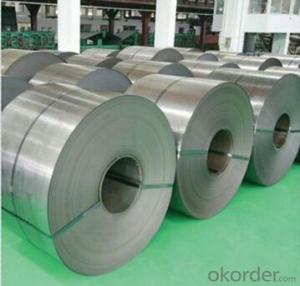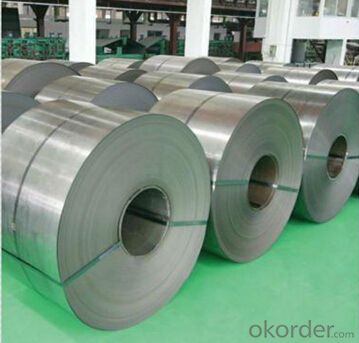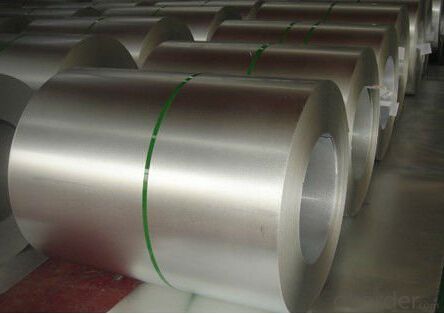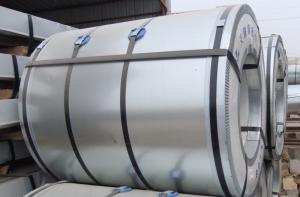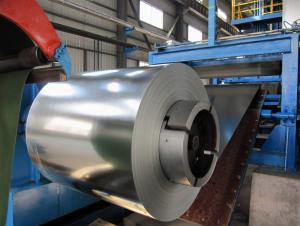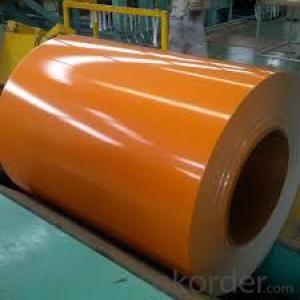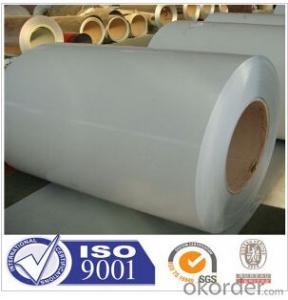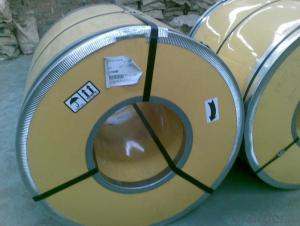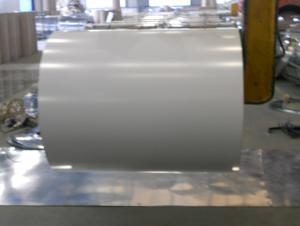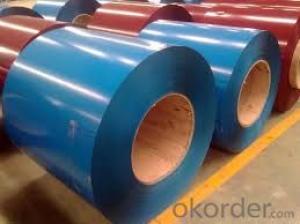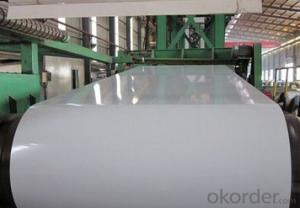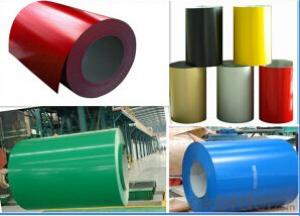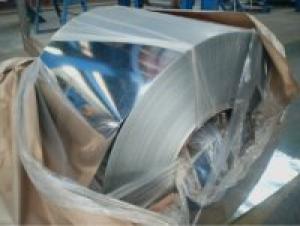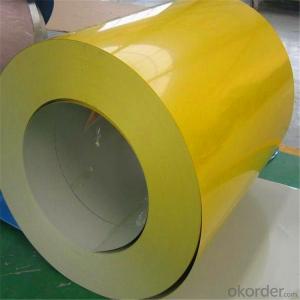Hot Rolled Galvanized Steel Coil (HDGI/GI)
- Loading Port:
- Shanghai
- Payment Terms:
- TT OR LC
- Min Order Qty:
- 25 m.t.
- Supply Capability:
- 10000 m.t./month
OKorder Service Pledge
OKorder Financial Service
You Might Also Like
Hot rolled galvanized steel coil Description:
| Standard: | AISI,ASTM,BS,DIN,GB,JIS | Grade: | SGCC, DX51D+Z, DX52D+Z, DX53D+Z, DX54D+Z, SGH34, etc | Thickness: | 0.14mm-3.0mm |
| Place of Origin: | China (Mainland) | Brand Name: | CNBM | Model Number: | 0.14-3.0mm*600-1500mm |
| Type: | Steel Coil | Technique: | Cold Rolled | Surface Treatment: | Galvanized |
| Application: | Container Plate | Special Use: | Wear Resistant Steel | Width: | 0.14mm-3.0mm |
| Length: | 600mm-1500mm | Zinc Coating:: | 30-275 g/m2 | Chromated or not:: | As Per Requirement |
| Anti-Fingerprint or not:: | As Per Requirement | Oiled or not:: | As Per Requirement | Spangle:: | Zero, Minimum, Regular |
Specifications
Item | Specification |
Commodity Name: | Galvanized Steel Coil (HDGI/GI) |
Thickness(mm): | 0.14mm-3.0mm |
Width(mm): | Above 600mm to 1500mm, negotiable about "below 600mm" |
Zinc Weight: | 30 g/m2 - 275 g/m2 |
Grade: | Mainly Prime, Secondary is also negotiable |
Material: | SGCC, DX51D+Z,DX53D+Z,DX54D+Z,SGH340, etc |
Spangle: | Zero, Minimum, Regular, Big |
FAQ:
Acceptable payment term and way?
T/T,L/C, T/T + L/C, D/P
Acceptable price term
FOB CNF CIF DDU CPT
Do you accept OA payment terms?
Yes, sure, but it normally depending on the order value
Do you have QC team?
Yeah, sure, our QC team is very important, they will keep the qualitycontrol for our products.
What is the validity of your quotation?
Normally 7 days.
What is your advantage?
24 hour quick response /Customer oriented/ Credit foremost/ Top quality Excellent
What is your acceptable payment term?
TT,LC,OA etc
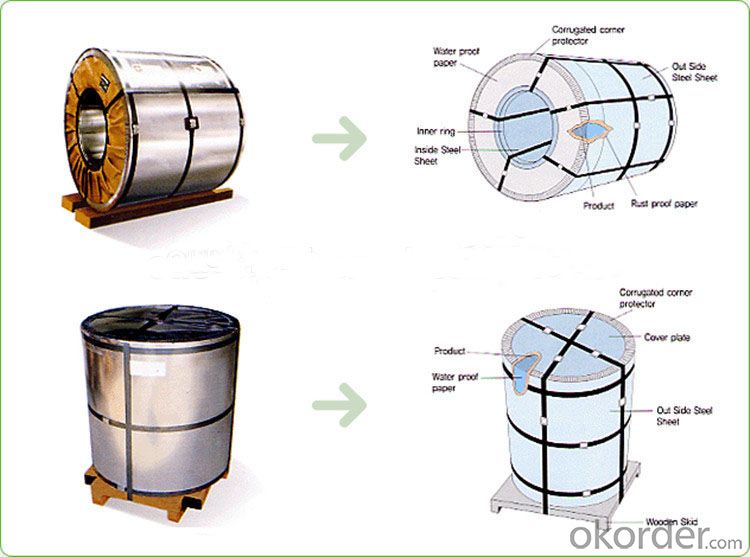
- Q: where to buy Transformer steel?Used in transformers and electric motors.
- Here okorder
- Q: I live in Dubai. I want to make a damascus steel sword and have no idea where to get the steel or what sort of steel I should get.First to adress the access of my steel...I need to get some low carbon and high carbon steel for the Damascus....what sort of steel is recommended for this? Also where would I be able to get my hands on it (Internet options e.g websites or locations)THANKS
- You okorder
- Q: What are the different types of steel coil treatments?
- There are several types of steel coil treatments, including pickling, oiling, and galvanizing. Pickling involves immersing the steel coil in an acid bath to remove impurities and scale, resulting in a clean surface. Oiling is the process of applying a thin film of oil to the coil to prevent corrosion during storage and transportation. Galvanizing is a treatment where a layer of zinc is applied to the steel coil, providing excellent protection against corrosion.
- Q: How are steel coils used in the production of furniture?
- Steel coils are used in the production of furniture to provide structural support and durability. They are commonly used in the construction of sofas, chairs, and other seating furniture to create a strong and sturdy foundation. The coils are typically incorporated into the furniture's frame or used in the construction of the seat cushions, providing comfort and resilience.
- Q: Can steel coils be galvanized?
- Yes, steel coils can be galvanized. Galvanizing is a process in which a protective zinc coating is applied to steel to prevent rusting and corrosion. This process can be applied to steel coils as well, providing them with enhanced durability and longevity.
- Q: Stains tends to leave on the stainless steel microwave oven and its very hard to clean off the stain (brownish stain) please suggest the best way to remove it.
- use a sponge/scrubber with soft scrub
- Q: More specifically steel wire (around 1/8 diameter). I'm doing a science fair project where I'm testing if concrete encased in steel has more fire resistance than steel by itself. However, I have no idea what the dimensions of concrete encased steel is so I can't scale down. And if I did have the dimensions I wouldn't know how to encase it around the steel wire (do I just poor concrete over it (heck I've never even used concrete)? Thanks for any help.
- If you're designing this structure, I recommend not filling it with concrete. It will do very little for stiffness (steel is 7-8 times stiffer than concrete), almost nothing for strength (unless buckling of the steel cylinder is an issue), and will add lots of unnecessary weight.
- Q: What is the purpose of coating steel coils?
- The purpose of coating steel coils is to provide a protective layer that prevents corrosion, enhances durability, and improves the overall appearance of the steel.
- Q: I have samurai sword that is a replica of the kill bill sword. It says on the blade stainless steel, what can i use to shine and protect blade. It had and still does a wax.like coating on the blade sine i received it. Thx for ur help
- Normally okorder
- Q: How are steel coils used in the manufacturing of railway bridges?
- Steel coils are used in the manufacturing of railway bridges as they are formed and shaped into structural elements such as beams, girders, and plates. These steel components provide the necessary strength, durability, and load-bearing capacity to support the weight of trains and ensure the structural integrity of the bridge.
Send your message to us
Hot Rolled Galvanized Steel Coil (HDGI/GI)
- Loading Port:
- Shanghai
- Payment Terms:
- TT OR LC
- Min Order Qty:
- 25 m.t.
- Supply Capability:
- 10000 m.t./month
OKorder Service Pledge
OKorder Financial Service
Similar products
Hot products
Hot Searches
Related keywords
